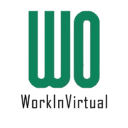Understanding Ageism in the Workplace
Ageism, a form of discrimination based on age, is an increasingly significant issue in the modern job market. Despite the valuable experience mature job seekers bring to the table, age-related stereotypes frequently hinder their employment opportunities. Common misconceptions include the belief that older employees lack adaptability, technological competence, or are more costly due to higher salary expectations and healthcare benefits.
Statistics reveal the troubling extent of ageism in the workplace. According to an AARP survey, approximately 61% of workers aged 45 and older have witnessed or faced age discrimination. Another study by the Equal Employment Opportunity Commission (EEOC) found that age-based complaints led to nearly 24,000 charges in 2019 alone. Certain industries, like technology and fast-paced startups, display particularly high levels of bias against older applicants, emphasizing youth over experience.
The repercussions of ageism are far-reaching. Psychologically, facing constant bias can erode self-esteem and lead to mental health issues like anxiety and depression. Financially, discrimination can cause prolonged periods of unemployment, underemployment, or forced early retirement, which can drastically affect savings and long-term financial stability.
The issue is further compounded when employers overlook the many advantages seasoned professionals bring. A robust work ethic, extensive industry knowledge, and refined problem-solving abilities are just a few of the attributes that experienced workers contribute. Addressing and mitigating age-related biases is not only a matter of fairness but also essential for fostering a more diverse and effective workforce.
Creating an inclusive workplace culture where each employee, irrespective of age, can thrive, benefits organizations through broader perspectives and enhanced productivity. By valuing the contributions of mature job seekers and combating ageism, we pave the way for a more equitable and dynamic labor market.
Enhancing Skills and Embracing Lifelong Learning
In the competitive job market, continuous skill development and lifelong learning are paramount, particularly for mature job seekers. Remaining current with industry trends and technological advancements can significantly bolster one’s job search after 50. The necessity to refresh and expand one’s skill set is not only about staying relevant but also about showcasing adaptability and proactive growth.
Multiple avenues are available for mature job seekers to upskill. Online platforms such as Coursera, LinkedIn Learning, and Khan Academy offer courses ranging from technical skills like coding and data analysis to soft skills such as leadership and communication. Additionally, certifications from recognized institutions can add considerable weight to a resume. For instance, obtaining a Project Management Professional (PMP) certification or a Certified Information Systems Security Professional (CISSP) can open doors in project management and cybersecurity, respectively.
Workshops and webinars provide opportunities to engage with industry professionals and stay informed about emerging trends. Attending these can help in networking and gaining insights from thought leaders. Furthermore, higher education options, including part-time degrees or postgraduate diplomas, offer more comprehensive ways to enhance one’s expertise.
Staying updated with the latest technological tools and software is crucial. Proficiency in common industry tools, ranging from Microsoft Office Suite to more specialized software like Salesforce or Adobe Creative Cloud, can make a significant difference. Mature candidates can leverage their extensive work experience by juxtaposing it with new competencies to present a well-rounded and robust professional profile.
To identify credible learning resources, it is vital to check course reviews, accreditation, and industry recognition. Reputable platforms often partner with leading universities and organizations, ensuring that the knowledge imparted is current and valuable. Incorporating new skills into professional profiles can be effectively done by updating LinkedIn profiles and resumes to prominently feature recent certifications, courses, or degrees. Including specific examples of how these new skills were applied in practical scenarios can further demonstrate their utility to prospective employers.
Crafting a Compelling Resume and Cover Letter
When embarking on a job search after 50, it is crucial to present a resume and cover letter that effectively showcase your extensive experience and unique skill set, while strategically avoiding potential age bias. One effective approach is to focus on achievements and skills that highlight your value propositions rather than presenting a chronological work history that might inadvertently emphasize your age.
Begin by selecting a modern resume format, such as a functional or combination resume, which organizes information by skill sets and achievements rather than time periods. This format can help draw attention to your most relevant and impressive accomplishments. For example, including a section titled “Key Achievements” at the top of your resume can immediately showcase your most relevant successes, making a strong initial impact.
Using relevant keywords is also essential, as many employers utilize applicant tracking systems (ATS) to screen resumes. Tailor each application by incorporating keywords specific to the job description, which can significantly enhance the likelihood of your resume passing through these systems and reaching human eyes. Highlighting your adaptability and continual learning is crucial; consider including a “Professional Development” or “Continuing Education” section to emphasize your commitment to self-improvement and staying current in your field.
Addressing employment gaps or career changes candidly yet positively in your cover letter can also work to your advantage. It is often best to frame such gaps as periods of skill development or personal growth. For example, you might write, “During my career hiatus, I focused on enhancing my project management skills through online courses and volunteer opportunities.”
For a compelling cover letter, start by clearly stating the role you are applying for and express your enthusiasm for the position. Highlight specific experiences that align closely with the job requirements and convey your interest in the company’s mission and values. For example, “My extensive experience in strategic planning and my passion for innovation make me a great fit for the Senior Project Manager role at XYZ Corporation.”
A few examples of strong resume bullet points are:
- Led a cross-functional team to successfully launch a new product line, increasing annual revenue by 30%.
- Implemented a company-wide training program that reduced onboarding times by 20% and improved employee retention rates.
And a powerful cover letter statement might be:
“With over 20 years of experience in financial management and a proven track record of optimizing operational efficiencies, I am excited about the opportunity to contribute to your esteemed firm.”
By strategically crafting your resume and cover letter, you can effectively demonstrate that your experience matters, while combating any potential age biases that might arise during the job search process.
Networking and Leveraging Experience
Mature job seekers can significantly improve their employment prospects by tapping into their extensive professional networks. Years of accumulated connections and relationships can serve as a valuable resource in the job search after 50. Engaging with these networks effectively requires a strategic approach, ensuring that contacts are leveraged to uncover hidden job opportunities.
Joining industry groups is a paramount strategy. Mature professionals should actively participate in relevant associations and attend industry-specific events. These forums provide occasions not only to stay updated with current trends but also to connect with peers and potential employers. Effective networking at these gatherings means engaging in thoughtful discussions and sharing insights drawn from one’s wealth of experience, hence positioning oneself as a thought leader.
Social media platforms, particularly LinkedIn, offer powerful tools for mature job seekers. An optimized LinkedIn profile can showcase a professional’s vast experience and achievements, while actively participating in groups can highlight ongoing engagement with industry topics. Sharing articles, commenting on relevant posts, and publishing original content further enhance visibility and establish authority in the field.
During networking conversations and interviews, mature job seekers should emphasize their extensive experience. They should articulate how their background equips them to tackle current challenges and mentor younger colleagues. By positioning themselves as strategic advisors, they bring to the fore the unique value they can add to potential employers.
Approaching potential employers with a clear professional brand is crucial. Mature candidates should craft a brand narrative that underscores their unique strengths and experiences. This narrative should accentuate their adaptability, ongoing commitment to learning, and ability to drive results based on their comprehensive knowledge and history of achievements. By crafting a compelling and authentic professional identity, mature job seekers can effectively combat bias and present themselves as indispensable assets to prospective employers.



